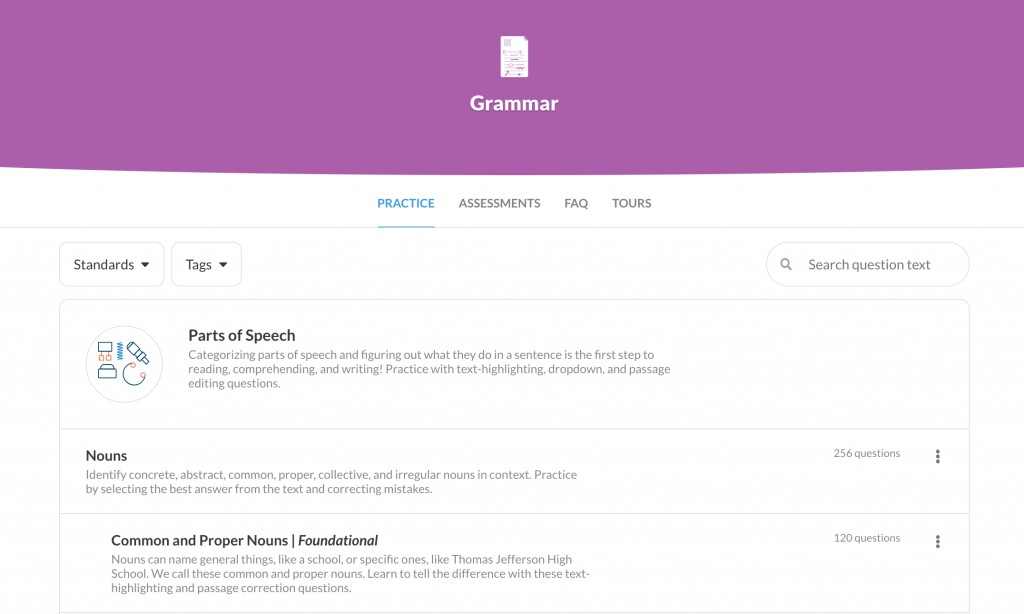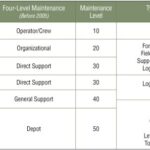When to use ‘more’ and ‘most’ in comparative and superlative adjectives can be tricky. COMPARE.EDU.VN simplifies the rules, providing clear examples and guidelines to help you master comparative and superlative forms effortlessly. Explore practical usage scenarios and avoid common errors with our comprehensive guide, designed to enhance your understanding of adjective comparison and superlative degree.
1. Understanding Comparatives and Superlatives: A Comprehensive Guide
Comparatives and superlatives are essential tools in the English language for expressing degrees of comparison. This guide clarifies the rules and provides examples for using “more” and “most” effectively, ensuring accurate and impactful communication.
1.1. What are Comparative Adjectives?
Comparative adjectives compare two nouns, indicating which has a greater or lesser degree of a particular quality. These adjectives are formed in different ways depending on the length and structure of the original adjective. Understanding these rules is crucial for correct usage.
Generally, comparatives are used to show how two things differ. They answer the question, “Which one has more of this quality?”
1.2. What are Superlative Adjectives?
Superlative adjectives, on the other hand, compare three or more nouns, identifying the one with the highest or lowest degree of a quality. Like comparatives, the formation of superlatives varies based on the adjective’s characteristics.
Superlatives indicate the extreme of a quality among a group. They answer the question, “Which one has the most of this quality?”
2. Forming Comparatives and Superlatives: The Rules
The method for forming comparative and superlative adjectives depends primarily on the number of syllables in the base adjective. Here’s a detailed breakdown:
2.1. One-Syllable Adjectives
For most one-syllable adjectives, the comparative form is created by adding “-er” and the superlative form by adding “-est.”
| ADJECTIVE | COMPARATIVE | SUPERLATIVE |
|---|---|---|
| Tall | Taller | Tallest |
| Short | Shorter | Shortest |
| Fast | Faster | Fastest |
| Old | Older | Oldest |


Examples:
- “John is taller than his brother.” (Comparative)
- “She is the fastest runner on the team.” (Superlative)
Note: If a one-syllable adjective ends in a consonant-vowel-consonant (CVC) pattern, double the final consonant before adding the suffix.
| ADJECTIVE | COMPARATIVE | SUPERLATIVE |
|---|---|---|
| Big | Bigger | Biggest |
| Hot | Hotter | Hottest |
| Fat | Fatter | Fattest |
2.2. Two-Syllable Adjectives
Two-syllable adjectives present more flexibility. Some can take the “-er” and “-est” endings, while others require “more” and “most.” A general guideline is to use “-er” and “-est” for adjectives ending in “-y,” “-er,” “-ow,” or “-le.” For others, “more” and “most” are often preferred.
| ADJECTIVE | COMPARATIVE | SUPERLATIVE |
|---|---|---|
| Happy | Happier | Happiest |
| Simple | Simpler | Simplest |
| Clever | Cleverer | Cleverest |
| Yellow | Yellower | Yellowest |
| Quiet | Quieter / More Quiet | Quietest / Most Quiet |
Examples:
- “She is happier now that she has a new job.” (Comparative)
- “This is the simplest solution to the problem.” (Superlative)
- “The library is more quiet than the coffee shop.” (Comparative)
- “That was the most quiet afternoon I’ve had in years.” (Superlative)
2.3. Three or More Syllable Adjectives
For adjectives with three or more syllables, always use “more” for the comparative form and “most” for the superlative form. This rule provides clarity and avoids awkward constructions.
| ADJECTIVE | COMPARATIVE | SUPERLATIVE |
|---|---|---|
| Beautiful | More Beautiful | Most Beautiful |
| Important | More Important | Most Important |
| Expensive | More Expensive | Most Expensive |
| Intelligent | More Intelligent | Most Intelligent |
Examples:
- “This painting is more beautiful than that one.” (Comparative)
- “She is the most intelligent student in the class.” (Superlative)
3. The Role of “More” and “Most”: In-Depth Analysis
Understanding when to use “more” and “most” is essential for constructing grammatically correct and natural-sounding sentences. Let’s delve deeper into their usage:
3.1. When to Use “More”
Use “more” to form the comparative of adjectives with two or more syllables that don’t typically take the “-er” ending. This includes most adjectives ending in consonants and many longer adjectives.
Guidelines:
- Two-Syllable Adjectives: Use “more” with adjectives that do not end in “-y,” “-er,” “-ow,” or “-le.”
- Three or More Syllables: Always use “more” regardless of the adjective’s ending.
- Emphasis: “More” can also be used with some one-syllable adjectives for emphasis, although this is less common.
Examples:
- “He is more careful than his brother.”
- “This book is more interesting than the last one I read.”
- “She is more confident about her presentation.”
3.2. When to Use “Most”
Use “most” to form the superlative of adjectives with two or more syllables that typically require “more” in the comparative form. This indicates the highest degree of the quality being described.
Guidelines:
- Two-Syllable Adjectives: Use “most” with adjectives that do not end in “-y,” “-er,” “-ow,” or “-le.”
- Three or More Syllables: Always use “most” regardless of the adjective’s ending.
Examples:
- “This is the most important decision you will make.”
- “She is the most dedicated employee in the company.”
- “That was the most exciting game of the season.”
4. Common Mistakes to Avoid
Even with a clear understanding of the rules, some common mistakes can occur when using comparative and superlative adjectives. Being aware of these pitfalls can help you avoid errors.
4.1. Double Comparatives and Superlatives
Avoid using both “more” and “-er” or “most” and “-est” together. This is a common error known as a double comparative or superlative.
Incorrect: “This car is more faster than the other one.”
Correct: “This car is faster than the other one.”
Incorrect: “She is the most smartest student in the class.”
Correct: “She is the smartest student in the class.”
4.2. Incorrect Syllable Counting
Miscounting syllables can lead to using the wrong form. Ensure you accurately count the syllables in each adjective to apply the correct rules.
Incorrect: “This problem is more simple than I thought.”
Correct: “This problem is simpler than I thought.”
4.3. Irregular Adjectives
Be mindful of irregular adjectives that do not follow the standard rules for forming comparatives and superlatives. These adjectives have unique forms that must be memorized.
| ADJECTIVE | COMPARATIVE | SUPERLATIVE |
|---|---|---|
| Good | Better | Best |
| Bad | Worse | Worst |
| Far | Farther / Further | Farthest / Furthest |
| Little | Less | Least |
| Much / Many | More | Most |
Examples:
- “She is a better singer than her sister.” (Comparative)
- “This is the best day of my life.” (Superlative)
5. Comparative vs. Superlative: Real-World Examples
To solidify your understanding, let’s explore real-world examples that illustrate the correct usage of comparative and superlative adjectives with “more” and “most.”
5.1. Comparing Products
When comparing products, use comparatives to show differences between two items and superlatives to highlight the best among many.
- “This laptop is more expensive than the other one, but it’s also more powerful.” (Comparative)
- “Among all the smartphones, this model is the most reliable and the most user-friendly.” (Superlative)
5.2. Describing Experiences
Use comparatives and superlatives to describe how experiences differ and to highlight exceptional moments.
- “The concert was more exciting than I expected.” (Comparative)
- “That was the most memorable vacation I’ve ever taken.” (Superlative)
5.3. Evaluating Performances
In evaluations, use comparatives to compare individual performances and superlatives to recognize outstanding achievements.
- “John’s presentation was more persuasive than Mary’s.” (Comparative)
- “She is the most dedicated and most efficient member of our team.” (Superlative)
6. Mastering Comparative and Superlative Adjectives: Practical Tips
Here are some practical tips to help you master the usage of comparative and superlative adjectives:
6.1. Practice Regularly
Consistent practice is key to mastering any grammar rule. Write sentences, compare items, and describe experiences using comparative and superlative adjectives.
6.2. Read Widely
Pay attention to how comparative and superlative adjectives are used in books, articles, and other written materials. This will help you develop a natural feel for their usage.
6.3. Seek Feedback
Ask for feedback on your writing to identify any errors in your use of comparative and superlative adjectives. Constructive criticism can help you improve your skills.
6.4. Use Online Resources
Utilize online grammar tools and resources to check your work and learn more about comparative and superlative adjectives. COMPARE.EDU.VN offers comprehensive guides and comparisons to assist you.
7. Elevate Your Writing with Comparative and Superlative Adjectives
Comparative and superlative adjectives are essential tools for adding depth and precision to your writing. By mastering their usage, you can express nuanced comparisons and highlight exceptional qualities.
7.1. Enhancing Descriptions
Use comparatives and superlatives to make your descriptions more vivid and engaging. Compare and contrast items, experiences, and people to create a clearer picture for your readers.
7.2. Improving Clarity
Precise use of comparative and superlative adjectives can improve the clarity of your writing. Ensure that your comparisons are accurate and easy to understand.
7.3. Adding Impact
Strategic use of superlatives can add impact to your writing, highlighting the most important or exceptional aspects of your subject.
8. Why Choose COMPARE.EDU.VN for Grammar Assistance?
COMPARE.EDU.VN is dedicated to providing clear, comprehensive, and reliable information to help you improve your grammar skills. Here’s why you should choose us:
8.1. Comprehensive Guides
Our guides cover a wide range of grammar topics, including detailed explanations of comparative and superlative adjectives.
8.2. Clear Examples
We provide numerous examples to illustrate the correct usage of grammar rules in various contexts.
8.3. Practical Tips
Our practical tips and exercises help you master grammar skills and apply them effectively in your writing.
8.4. Reliable Information
Our information is based on reputable sources and reviewed by grammar experts to ensure accuracy and reliability.
9. Case Studies: Applying Comparative and Superlative Adjectives
Let’s explore case studies demonstrating the effective use of comparative and superlative adjectives in different scenarios.
9.1. Marketing Campaign Analysis
A marketing team compared two campaigns using comparative adjectives to determine which was more successful.
- “Campaign A was more creative than Campaign B, but Campaign B was more effective in generating leads.”
- “The most successful campaign overall was the one that combined elements from both A and B.”
9.2. Product Development
Engineers used comparative and superlative adjectives to evaluate different prototypes of a new product.
- “Prototype 2 was more durable than Prototype 1, but it was also more expensive.”
- “The most innovative feature was included in Prototype 3, making it the frontrunner.”
9.3. Employee Performance Review
Managers used comparative and superlative adjectives to assess employee performance.
- “John is more reliable than his colleagues, but Mary is the most proactive in suggesting new ideas.”
- “Overall, Sarah is the most valuable member of the team due to her consistent performance and positive attitude.”
10. Frequently Asked Questions (FAQs)
1. What is the difference between comparative and superlative adjectives?
Comparative adjectives compare two things, while superlative adjectives compare three or more things.
2. When should I use “more” instead of “-er”?
Use “more” for adjectives with two or more syllables that don’t typically take the “-er” ending.
3. When should I use “most” instead of “-est”?
Use “most” for adjectives with two or more syllables that typically require “more” in the comparative form.
4. What are some common mistakes to avoid when using comparative and superlative adjectives?
Avoid double comparatives and superlatives, incorrect syllable counting, and misuse of irregular adjectives.
5. How can I improve my usage of comparative and superlative adjectives?
Practice regularly, read widely, seek feedback, and utilize online resources like COMPARE.EDU.VN.
6. Are there exceptions to the rules for forming comparative and superlative adjectives?
Yes, irregular adjectives have unique forms that do not follow the standard rules.
7. Can I use “more” and “most” with one-syllable adjectives?
While less common, “more” and “most” can be used with one-syllable adjectives for emphasis.
8. How do I count syllables in an adjective?
Count the number of vowel sounds in the adjective. Each vowel sound typically represents one syllable.
9. What should I do if I’m unsure whether to use “-er” or “more”?
When in doubt, using “more” is often a safer choice, especially for longer adjectives.
10. Where can I find more resources on comparative and superlative adjectives?
COMPARE.EDU.VN offers comprehensive guides and comparisons to help you master this grammar topic.
Conclusion: Mastering “More” and “Most” for Effective Communication
Mastering the use of “more” and “most” in comparative and superlative adjectives is crucial for clear and effective communication. By understanding the rules, avoiding common mistakes, and practicing regularly, you can enhance your writing and speaking skills. Trust COMPARE.EDU.VN to guide you on your journey to grammar excellence.
Ready to take your writing to the next level? Visit COMPARE.EDU.VN today to explore our comprehensive guides, practical tips, and reliable resources. Our team is dedicated to helping you make informed decisions and communicate with clarity and confidence.
For further assistance, contact us at 333 Comparison Plaza, Choice City, CA 90210, United States. You can also reach us via Whatsapp at +1 (626) 555-9090 or visit our website at compare.edu.vn. Let us help you compare, decide, and succeed!
